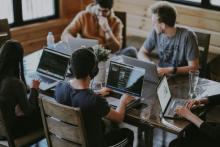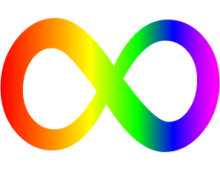Post written by a guest blogger Yewon Cheon, former postdoc in the National Institute of Aging and current Program Coordinator in OITE.
“I love interviewing people!”
One day, I was full of energy, running down the hall and shouting with excitement, coming back from an interview. It surprised everyone, including me. Because I am shy and afraid of talking to people I don’t know, it was very hard for me to absorb and initiate informational interviews for my career development. I am a researcher who hates networking, but I am NOT afraid of doing an experiment. So, I designed my new experiment: informational interviews.
When I started to treat informational interviews like an experiment I found myself enjoying this important career tool, and using it for my advantage. Think of it like this: It is composed of a literature review (getting information about person and career), developing methods (preparing questions), an experiment (interview), data acquisition (Q&A) and data analysis (evaluating a meeting), and repetition to increase sample size and to confirm reproducibility (contact others).
Here is how I found success:
My background:
I was shy and not confident in myself, finding it easier to label test tubes at the bench rather than to talk to strangers about their careers. Informational interviewing and networking were not things I wanted to do . My career mentor gave me two names to contact for informational interviews, a handout on how to conduct informational interviews, and the encouragement to go out and try….yet, it still took me a week to connect.
I am an Asian woman. I was raised and educated in the traditional Eastern way; listening and following others is considered to be respectful, but being persistent and aggressive is frowned on. I felt that being proactive in conducting informational interviews was the equivalent of being aggressive.
Information Collection/Method:
My biggest fears came from the “unknowns”. To overcome this anxiety, I tried to make the unknown become known. I created a career notebook to keep myself organized. I wrote in data about interviewees from Google, LinkedIn, Web pages, videos, pictures, publications and other connections. I wrote down questions in my notebook that I could ask each individual. This helped me to be prepared and planned.
Experiment:
On the day of the meeting, I reviewed my “protocol” in my notebook and practiced smiling! It turned out to be much more personal, enjoyable and informative than I had anticipated. I found that the more I prepared, the better the discussions and the contacts I got. When I was straightforward with others about my weaknesses and goals, I found I was able to get more honest advice and help. I recorded all the information from my meeting in my notebook. After a meeting, I wrote a thank you note as soon as possible (within a day), pointing out how it was valuable and helpful to me.
Result:
After the first meeting everything changed. I used the procedure again with other contacts the interviewee recommended. As a remarkable example, I planned to talk with one person but ended up meeting four people! Within two weeks of starting, I met 10 people, had 3 more scheduled, many more possible connections and heard about two possible positions. Based on these accomplishments, I had the courage to start cold-contacting and approaching speakers at a career fair to interview them. I was not walking anymore, I was running!
Analysis:
After several meetings, I started to organize all the information I gathered in a table (Excel). It had the following information: interview date, names, contacts, degrees, job category, job titles, actual jobs, organization, years in that position, how to get there, who referred to me, who is connected, what I liked about the specific job, what I did not like, and a list of possible challenges for that job. And then, on a scale of one to five, I rated each interview/person/job, for the following issue as they relate to my personal priorities: work interest, my skill set compatibility, personal match, work environment, work schedule/life balance, career development, future opportunities in the US, and future, possible opportunities abroad. As a scientist who loves to see results and concepts as numbers, I greatly enjoyed this process. It was easier to remember people and compare jobs by making an average and sorting by job category. After having gone through more than 20 interviews, it was very clear to see what I wanted to do and what challenges I needed to work on.
Conclusion:
It was a totally new, different level of learning. It was learning about who I am and what I can do. I have grown tremendously and I am not finished yet. I will keep doing it throughout my career. Believe me, if I did it, anyone can do it.




